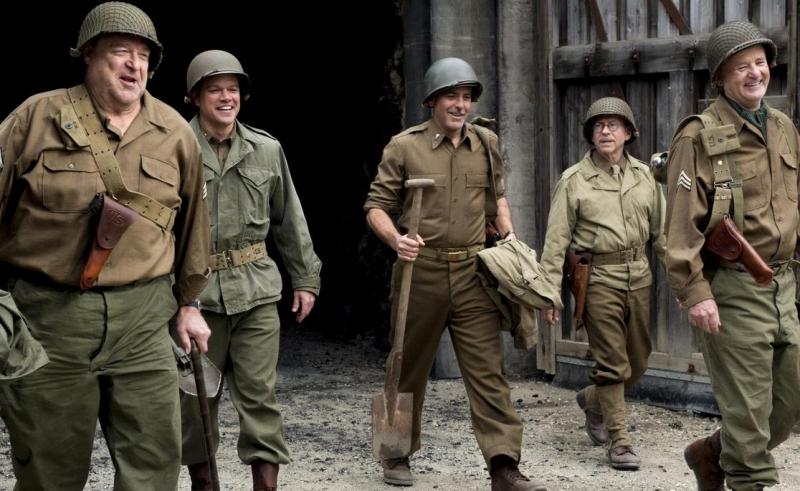Film Review: 'The Monuments Men'

Based on true events, "The Monuments Men" (2014) tells the story of a military unit whose mission was to retrieve stolen art taken by the Nazis during WWII. George Clooney both directs and stars in this film. Clooney also helped write the script, basing it on the book "The Monuments Men: Allied Heroes, Nazi Thieves, and the Greatest Treasure Hunt in History," by Robert M. Edsel, with Bret Witter.
The film opens with Frank Stokes (Clooney) giving an art lecture to President Franklin D. Roosevelt explaining the importance of protecting historical pieces of art during wartime.
"Who would be sure the Statue of David is still standing, that the Mona Lisa is still smiling?" Stokes asks.
To the soundtrack of a happy-go-lucky troop tune, the film then introduces the misfit band of art experts in a very "Ocean's Eleven"-esque montage: art restorer James Granger (Matt Damon), architect Richard Campbell (Bill Murray), sculptor Walter Garfield (John Goodman), French painter Jean Claude Clermont (Jean Dujardin), British curator Donald Jeffries (Hugh Bonneville) and theater producer Preston Savitz (Bob Balaban). Cate Blanchett also stars as a Frenchwoman who's part of the Resistance movement in Paris.
The bumbling brood isn't cut out for war, that much is clear. But in a series of fortunate events, they manage to outsmart the Nazis and save countless pieces of priceless art.
The film's most poignant moments draw from the same ethical question underlying "Saving Private Ryan" — what mission warrants a soldier's life? Stokes tells his men from the get-go that no piece of art is worth dying for, but given that these men's lives revolve around art preservation, they are ready for the battle.
Then it becomes a hunt for lost treasure that takes the Monuments Men all over Europe. They're on a strict deadline. As the Nazi cause begins to unravel and German defeat appears more certain, Adolf Hitler issues an order that should the Nazis fall, all of the stolen art is to be destroyed.
Indiana Jones' quest to find the lost ark took the treasure hunt story and mythologized it to enrapture the audience. And Professor Indy's deft whip skills made the journey look cool.
But with "The Monuments Men," the realities of war — and in particular WWII — are kept on the fringes. It's understandable since the film wants to take on a more lighthearted tone. But the truths of the deadliest war the world has ever seen are glossed over with too light of humor. A child shooting at the men is given a time-out. The men achieve diplomacy with a scared lone German soldier by offering cigarettes and bonding over the only words he knows in English, "John Wayne."
"The Monuments Men" struggles to find its footing because it can't make up its mind on what type of movie it is. Is it supposed to be historically informative? In reality, the Monuments, Fine Arts, and Archives program had roughly 400 men and women from 13 countries, not just a handful of Americans. And though the men wear uniforms, it's definitely not a war movie.
With such an all-star cast, it's disappointing to see the film not reach its potential. When the men are together, their banter works. The quiet, nerved Balaban particularly shines, the type of mousey gentleman who squeals over crackers and caviar in his care package from home. And Blanchett's hesitance to help — she pointedly asks Damon whether the stolen art will be returned to the French or be kept in American museums — resonates in this conflict of world powers, where unheeded suspicions can mean the difference between life and death.
But for the majority of the film, the characters are scattered throughout Europe. Damon goes to a liberated Paris to get information from Blanchett on where the stolen art is being stored. Murray and Balaban join forces to track down a conniving German. And even though Stokes builds a makeshift radio so they can stay in touch as they go about their separate mini-missions, the save-the-art cause that unites them gets muddied in the trenches.
"The mission was never designed to succeed," Stokes says to his dejected men. And apparently neither was the film.
Reach Senior Editor Melissah Yang here. Follow her on Twitter @MelissahYang.



